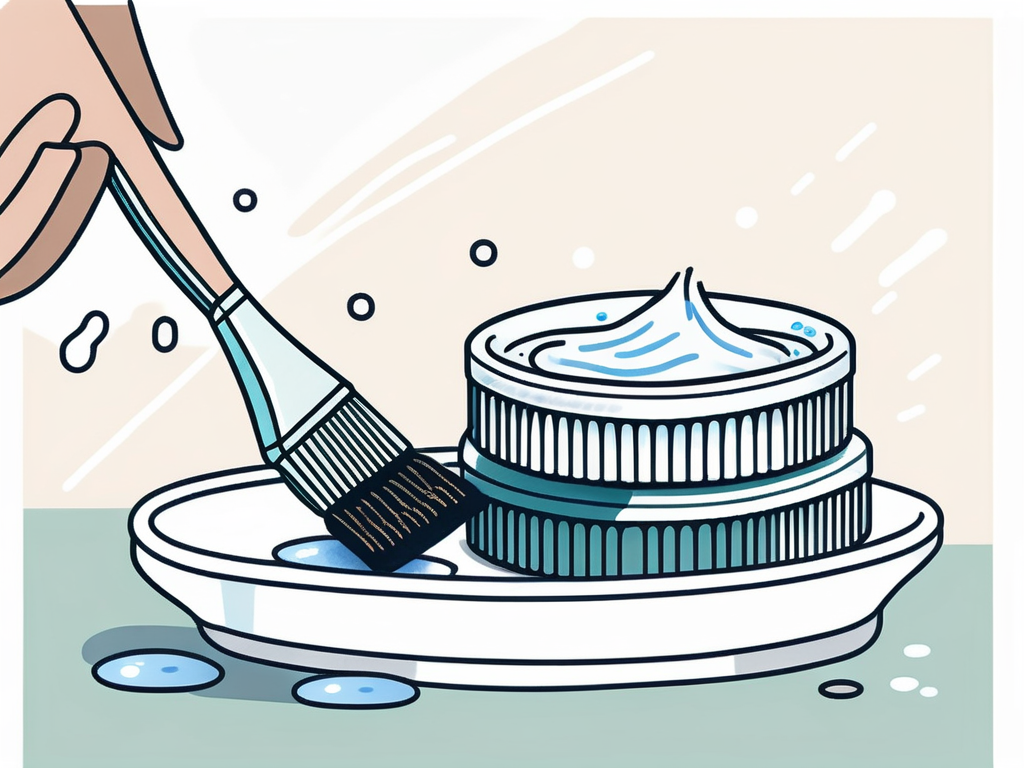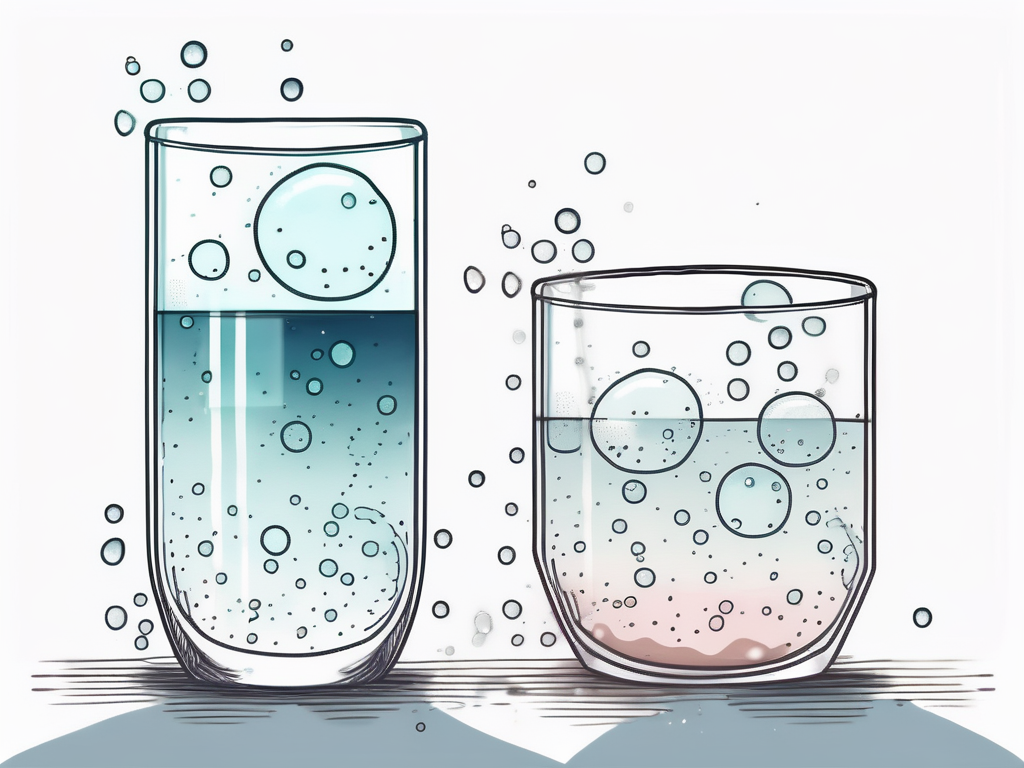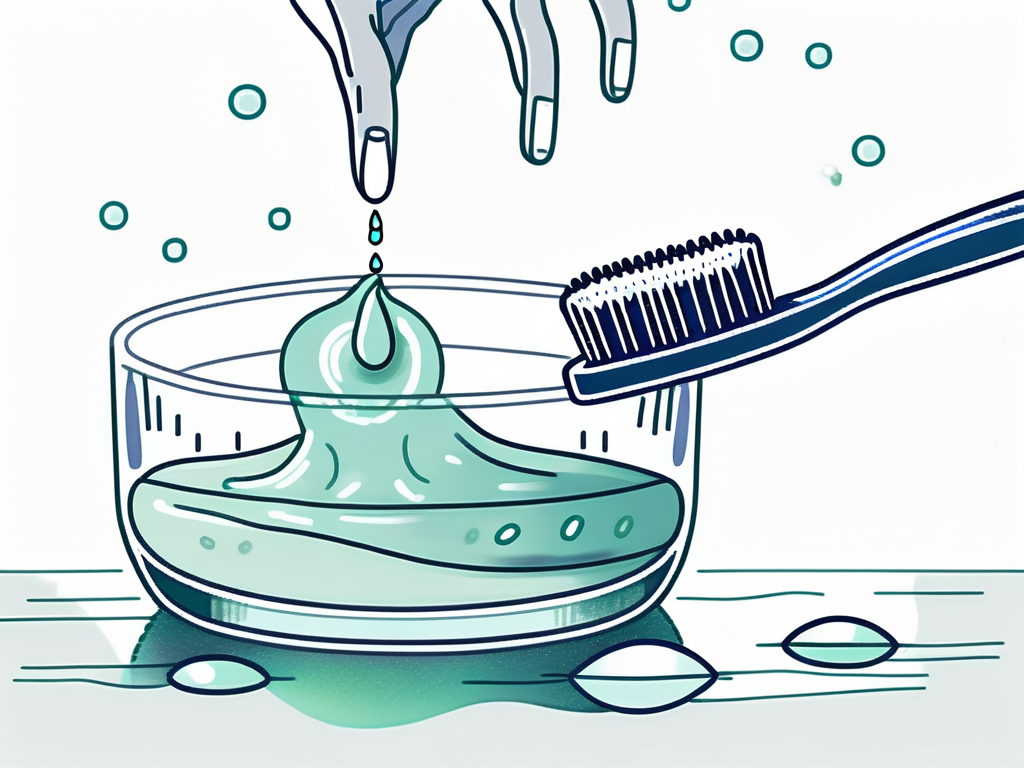Retainers are an essential component of dental care, helping to maintain the alignment of teeth after orthodontic treatment. However, just like our teeth, retainers require proper hygiene to prevent the buildup of bacteria and plaque. In this article, we will explore the importance of retainer hygiene and provide you with a step-by-step guide on how to clean retainers effectively using hydrogen peroxide.
Understanding the Importance of Retainer Hygiene
Proper retainer hygiene is vital for two main reasons: maintaining oral health and preserving the lifespan of the retainer itself. Failure to clean your retainer regularly can lead to various dental issues and compromise its effectiveness in keeping your teeth in their desired position.

When it comes to retainer hygiene, it's not just about keeping your teeth straight; it's also about safeguarding your overall oral health. Your retainer is in constant contact with your mouth, creating a prime environment for bacteria to thrive if not cleaned properly.
Risks of Poorly Maintained Retainers
Poorly maintained retainers can become breeding grounds for harmful bacteria, which may contribute to bad breath, cavities, and gum disease. Bacteria thrive in warm and moist environments, making your retainer an ideal home if not cleaned properly.
Moreover, neglecting retainer hygiene can have aesthetic consequences as well. The accumulation of plaque on your retainer can lead to a condition called "white spot lesions," which are permanent marks on the enamel surface of your teeth. These unsightly marks can detract from the overall appearance of your smile, highlighting the importance of proper cleaning and maintenance.
Benefits of Regular Retainer Cleaning
By establishing a routine for retainer cleaning, you can prevent the aforementioned risks and enjoy several benefits. Regular cleaning can help keep your retainer odor-free, minimize the chances of bacterial infections, and maintain the overall oral health that your retainer was intended to support.
Furthermore, maintaining good retainer hygiene can also contribute to the longevity of your retainer. Proper cleaning can prevent the buildup of tartar, which not only harbors bacteria but can also weaken the structure of the retainer over time. By investing time in caring for your retainer, you are not only protecting your oral health but also ensuring that your retainer remains effective in preserving the alignment of your teeth.
The Role of Hydrogen Peroxide in Cleaning
Hydrogen peroxide is widely recognized as an effective cleaning agent due to its antimicrobial and antiseptic properties. It is commonly used in dental care for its ability to kill bacteria and remove stains. When used correctly, hydrogen peroxide can serve as a powerful tool in maintaining your retainer's cleanliness.

Properties of Hydrogen Peroxide
Hydrogen peroxide is a pale blue liquid consisting of water and an additional oxygen molecule. The extra oxygen creates its powerful oxidizing properties, which break down organic compounds and kill bacteria.
Furthermore, hydrogen peroxide is a versatile compound that can be used for various cleaning purposes beyond dental care. It is often found in household cleaning products, where its disinfectant properties make it effective in killing germs on surfaces.
Why Hydrogen Peroxide for Retainers?
Hydrogen peroxide is a safe and effective option for cleaning retainers. It not only kills bacteria but can also remove tough stains without causing damage to the retainer material.
Moreover, hydrogen peroxide is environmentally friendly, as it breaks down into water and oxygen, leaving behind no harmful residues. This makes it a preferred choice for individuals looking for cleaning solutions that are both effective and eco-conscious.
However, it's crucial to follow the correct procedure and concentration guidelines to ensure optimal results and avoid any potential harm to your retainer.
Preparing Your Retainer for Cleaning
Before diving into the cleaning process, it's important to handle your retainer with care. Here are a few steps to take before initiating the cleaning process:

Retainers are essential for maintaining the alignment of your teeth after orthodontic treatment. Proper care and maintenance of your retainer are crucial to ensure its longevity and effectiveness in preserving your smile.
Removing the Retainer Safely
To prevent any accidental damage or breakage, ensure you remove your retainer gently. If you wear a removable retainer, carefully take it off from your mouth by slowly lifting it off the upper or lower teeth.
It's advisable to store your retainer in its case when not in use to prevent it from being lost or accidentally damaged. Avoid placing it in napkins or tissue paper, as it can easily be mistaken for trash.
Be cautious not to twist or bend the retainer, as it may result in deformation or loss of its effectiveness.
Initial Rinse and Inspection
Once the retainer is removed, give it a thorough rinse under lukewarm water to remove any loose debris or food particles. Take this opportunity to inspect your retainer for any signs of damage or wear.
Regularly checking your retainer for wear and tear can help you address any issues early on, preventing further damage that may affect its fit and function. Proper maintenance can also extend the lifespan of your retainer, saving you time and money in the long run.
If you notice any cracks, sharp edges, or discoloration, it's best to consult your orthodontist for further guidance on whether the retainer needs repair or replacement.
Step-by-Step Guide to Cleaning Retainers with Hydrogen Peroxide
Now that you have prepared your retainer for cleaning, let's dive into the step-by-step process of cleaning retainers using hydrogen peroxide:
Mixing the Solution
Start by preparing a hydrogen peroxide solution. Combine one part 3% hydrogen peroxide with three parts water in a clean container. This diluted solution will ensure it is safe for your retainer while still being effective in cleaning.
Avoid using concentrated hydrogen peroxide solutions or strong chemicals, as they may damage the retainer.
Soaking the Retainer
Place your retainer in the prepared solution, ensuring it is fully submerged. Allow it to soak for approximately 15-20 minutes. This soaking period will help break down any stubborn plaque or bacteria present on the retainer's surface.
While the retainer soaks, it's a good idea to gently brush your teeth using toothpaste and a soft-bristled brush. This will help maintain overall oral hygiene while waiting for the retainer to be cleaned.
Post-Soak Cleaning
After the soaking period is complete, gently remove the retainer from the solution. Rinse it thoroughly under lukewarm water to eliminate any residual hydrogen peroxide.
Inspect the retainer to ensure all visible debris, plaque, or stains have been removed. If necessary, use a soft toothbrush or retainer brush to gently scrub away any remaining deposits.
Remember to be gentle during this cleaning process to avoid damaging the retainer.
Now, let's talk about the importance of cleaning your retainer regularly. Retainers are an essential part of maintaining the alignment of your teeth after orthodontic treatment. However, they can also become a breeding ground for bacteria if not properly cleaned.
By regularly cleaning your retainer, you can prevent the buildup of plaque, tartar, and bacteria, which can lead to bad breath, tooth decay, and even gum disease. Hydrogen peroxide is an excellent cleaning agent as it has antimicrobial properties that can effectively kill bacteria and disinfect your retainer.
It's important to note that while hydrogen peroxide is a safe and effective cleaning solution, it should not be used as a substitute for regular brushing and flossing. Brushing your teeth twice a day and flossing daily are still crucial for maintaining good oral hygiene.
Additionally, it's recommended to clean your retainer at least once a day to keep it free from bacteria and odors. Regular cleaning will also help extend the lifespan of your retainer, saving you from the hassle and cost of replacing it frequently.
So, make it a habit to incorporate retainer cleaning into your daily oral hygiene routine. By following the step-by-step guide mentioned above and being consistent with your cleaning efforts, you can ensure that your retainer remains clean, fresh, and free from harmful bacteria.
Post-Cleaning Care for Your Retainer
Now that your retainer is sparkling clean, it's important to maintain its hygiene and ensure its longevity. Here are some post-cleaning care tips:
After cleaning your retainer, it's essential to understand the significance of proper drying and storage. Thoroughly dry your retainer using a clean towel before placing it back in its storage case. Moisture can create a breeding ground for bacteria, so ensuring your retainer is completely dry is crucial in preventing any bacterial growth.
Furthermore, it's advisable to avoid leaving the retainer exposed to direct sunlight or extreme temperatures. Exposure to these elements can cause the retainer to warp or distort, impacting its effectiveness and fit.
Drying and Storing Your Retainer
Thoroughly dry your retainer using a clean towel before placing it back in its storage case. Moisture can promote the growth of bacteria, so keeping your retainer dry is essential.
Avoid leaving the retainer exposed to direct sunlight or extreme temperatures, as this can lead to warping or distortion.
Proper maintenance and care are key to ensuring the longevity of your retainer. In addition to regular cleaning, it's recommended to soak your retainer in a denture cleaner solution at least once a week to eliminate any lingering bacteria and plaque buildup.
Regularly inspect your retainer for any signs of wear and tear, such as cracks or discoloration. If you notice any issues, contact your orthodontist for guidance on repair or replacement.
Regular Maintenance and Replacement
To ensure your retainer remains effective, continue to clean it using hydrogen peroxide at least once a week. Additionally, follow your orthodontist's instructions on when to replace your retainer, as they typically have a limited lifespan.
Regular orthodontic check-ups are vital to monitor the condition of your retainer and address any concerns or issues promptly.
By following these steps and maintaining proper retainer hygiene, you can keep your retainer clean and fresh, ensuring optimal oral health and a confident smile!
While maintaining your retainer's cleanliness is crucial, protecting your teeth from nighttime grinding is equally important. Remi offers custom mouth guards that are tailored to your unique dental profile, providing a perfect fit and superior protection. With Remi's mouth guards, you can prevent damage to your teeth and ensure your smile stays aligned and beautiful. Experience the convenience and affordability of Remi's at-home impression kit and join The Remi Club for regular replacements at a fraction of the cost. Ready to give your teeth the care they deserve? Shop Now and discover the comfort and quality of Remi's custom mouth guards.












